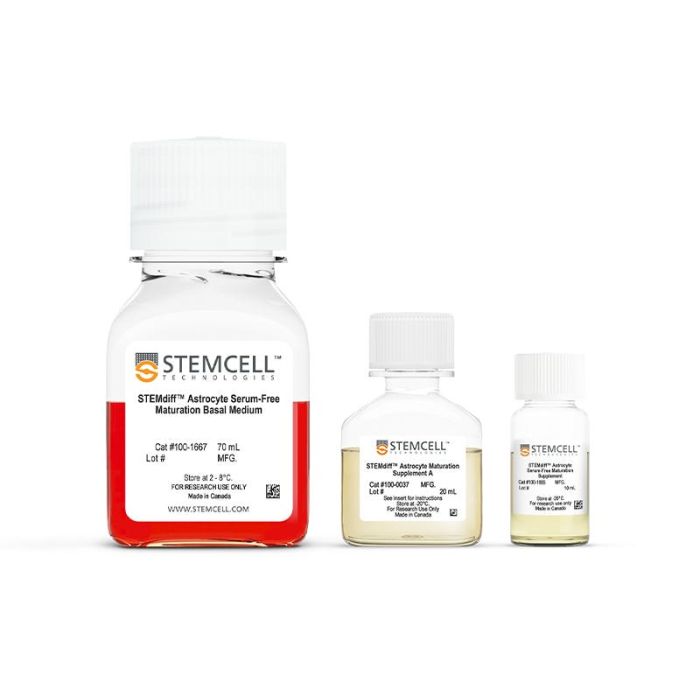产品号 #100-1666_C
无血清成熟试剂盒,用于将人类多能干细胞(hPSC)衍生的星形胶质细胞前体细胞分化为成熟的皮质类型星形胶质细胞。
若您需要咨询产品或有任何技术问题,请通过官方电话 400 885 9050 或邮箱 info.cn@stemcell.com 与我们联系。
无血清成熟试剂盒,用于将人类多能干细胞(hPSC)衍生的星形胶质细胞前体细胞分化为成熟的皮质类型星形胶质细胞。
无血清成熟试剂盒,用于将人类多能干细胞(hPSC)衍生的星形胶质细胞前体细胞分化为成熟的皮质类型星形胶质细胞。
使用 STEMdiff™ 星形胶质细胞无血清成熟试剂盒,可快速高效地从星形胶质细胞前体细胞中分化为皮质型星形胶质细胞。本试剂盒与 STEMdiff™ 星形胶质细胞分化试剂盒配合使用,可从人多能干细胞 (hPSC) 中分化出星形胶质细胞前体细胞,然后将其成熟为星形胶质细胞。使用这种完全无血清的系统,最快可在 7 周内从 hPSC 中获得高纯度的星形胶质细胞群(平均 S100B 阳性细胞 > 70%,GFAP 阳性细胞 > 60%,双皮质素阳性细胞 < 15%),并可将其长期培养。该试剂盒在在不同细胞系之间表现出更高的一致性,在标志物表达及谷氨酸摄取方面尤为显著。使用这些产品衍生的细胞是用于模拟人类神经发育和疾病、药物筛选和毒性测试的多功能工具。
分类
专用培养基
细胞类型
星形胶质细胞,神经细胞,PSC衍生,多能干细胞
应用
细胞培养,鉴定,分化,功能学筛选,免疫荧光,表型鉴定
品牌
STEMdiff
研究领域
疾病建模,药物发现和毒理检测,神经科学
制剂类别
无血清

Figure 1. Schematic for STEMdiff™ Astrocyte Serum-Free Kit Using the Embryoid Body Protocol for Neural Induction
Astrocyte precursors can be generated from hPSC-derived NPCs in 20 days after selecting neural rosettes from replated embryoid bodies. The resulting cells can then be matured using STEMdiff™ Astrocyte Serum-Free Maturation Kit. Snowflakes indicate optional cryopreservation timepoints. hPSC = human pluripotent stem cell; NPC = neural progenitor cell; EB = embryoid body.

Figure 2. Schematic for STEMdiff™ Astrocyte Serum-Free Kit Using the Monolayer Protocol for Neural Induction
Astrocyte precursors can be generated from hPSC-derived NPC monolayers in 21 days after three single-cell passages. The resulting cells can then be matured using STEMdiff™ Astrocyte Serum-Free Maturation Kit. Snowflakes indicate optional cryopreservation timepoints. hPSC = human pluripotent stem cell; NPC = neural progenitor cell.

Figure 3. Pure Populations of Astrocytes Are Generated Using STEMdiff™ Astrocyte Differentiation Kit and Matured Using STEMdiff™ Astrocyte Serum-Free Maturation Kit or STEMdiff™ Astrocyte Maturation Kit
NPCs were generated from a variety of hPSC cell lines maintained in mTeSR™ Plus using STEMdiff™ SMADi Neural Induction Kit. Using the embryoid body protocol, the NPCs were differentiated using STEMdiff™ Astrocyte Differentiation Kit for 3 weeks and matured using STEMdiff™ Astrocyte Maturation Kit or STEMdiff™ Astrocyte Serum-Free Maturation Kit for an additional 3 weeks. (A) Representative images display astrocytes derived from the iPSC line SCTi003-A. Nuclei are labeled with Hoechst (gray). The resulting cultures contain a highly pure population of astrocytes expressing astrocyte identity marker GFAP (magenta) and mature astrocyte marker S100B (cyan). (B) The percentage expression of GFAP, S100B, and DCX in the resulting cultures, derived from 3 ESC (H1, H7, and H9) and 4 iPSC (WLS-1C, STiPS-R038, STiPS-M001, and SCTi003-A) lines, were quantified after culture in either STEMdiff™ Astrocyte Maturation Kit (‘Serum-Containing’) or STEMdiff™ Astrocyte Serum-Free Maturation Kit (‘Serum-Free’). Each point is a biological replicate (averaged across the technical replicates). Different symbols represent different experiment setups. Numbers are % positive of total Hoechst-positive cells. Normality was determined by Anderson-Darling test and statistics were calculated by the unpaired t-test or Mann-Whitney test. * p ≤ 0.05 and *** p ≤ 0.001. NPC = neural progenitor cell; hPSC = human pluripotent stem cell; ESC = embryonic stem cell; iPSC = induced pluripotent stem cell.

Figure 4. Astrocytes Maintained in STEMdiff™ Astrocyte Serum-Free Maturation Kit and STEMdiff™ Astrocyte Maturation Kit Are Transcriptionally Similar
Bulk RNA-seq data from hPSCs maintained in mTeSR™ Plus; neural progenitor cells, and hPSC-derived forebrain neuron precursors maintained for 7 days in STEMdiff™ Forebrain Neuron Differentiation Kit; hPSC-derived forebrain neurons after 14 days in STEMdiff™ Forebrain Neuron Maturation Kit; hPSC-derived astrocyte precursor cells after 3 weeks in STEMdiff™ Astrocyte Differentiation Kit; hPSC-derived astrocytes matured in STEMdiff™ Astrocyte Maturation Kit or in STEMdiff™ Astrocyte Serum-Free Maturation Kit. Principal component analysis was performed on this data. The astrocytes maintained in both STEMdiff™ Astrocyte Serum-Free Maturation Kit and STEMdiff™ Astrocyte Maturation Kit cluster together, demonstrating the similar global gene expression patterns between the resulting astrocytes after maturation with either of these two kits when generated from various hPSC cell lines. The spread of cell types along the PC2 y-axis and overlap of the astrocyte precursor cell group with the forebrain neuron group demonstrates that the precursor cells pass through a neurogenic fate before reaching their gliogenic gate. The top genes for the PC2 top loading are GFAP, COL14A1, and CD44. hPSCs = human pluripotent stem cells, NPCs = neural progenitor cells.

Figure 5. Astrocytes Generated with STEMdiff™ Astrocyte Kits Modulate Internal Calcium Concentration After ATP and Glutamate Treatments
Astrocytes generated from iPSC lines WLS-1C and SCTi003-A were matured in either STEMdiff™ Astrocyte Maturation Kit or STEMdiff™ Astrocyte Serum-Free Maturation Kit. The astrocytes were kept in BrainPhys™ Imaging Optimized Neuronal Medium to reduce the background fluorescence in the images and loaded with the fluorescent calcium indicator Fluo-4AM. (A) The WLS-1C-derived astrocytes were then exposed to 3 µM ATP and (B) the SCTi003-A-derived astrocytes were exposed to 25 µM glutamate. The calcium response to the treatments were captured for 1 or 2 minutes total at 500 ms intervals. Representative time-lapse image series shows the calcium response at various pre- and post-treatment timepoints. Orange arrows identify an astrocyte that increases in fluorescence after treatment and the blue arrows identify an astrocyte wherein calcium fluctuated from increased to decreased within the representative time series. iPSC = induced pluripotent stem cell.

Figure 6. hPSC-Derived Neurons, Astrocytes, and Microglia Can Be Tri-Cultured to Model Cell-Cell Interactions In Vitro
Astrocyte precursor cells from the ESC line H7 were maintained in STEMdiff™ Astrocyte Serum-Free Maturation Kit for 3 weeks and passaged weekly. Hematopoietic progenitor cells from the iPSC line WLS-1C were thawed into STEMdiff™ Microglia Differentiation Kit for 24 days. Forebrain neuron precursors from the iPSC line STiPS-R038 were thawed and maintained in STEMdiff™ Forebrain Neuron Maturation Kit for 1 week. After the neurons were matured for 1 week, the astrocytes were passaged on top of the neurons at a 1:1 seeding density and maintained overnight in the STEMdiff™ Astrocyte Serum-Free Maturation Kit. The next day, 24-day-old microglia were plated on top of the neuron and astrocyte co-culture in the tri-culture medium. For more detailed instructions on the tri-culture protocol, please refer to the full protocol. (A) 30-day-old tri-culture composed of (B) hPSC-derived class III β-tubulin-positive forebrain neurons, (C) GFAP-positive astrocytes, and (D) IBA1-positive microglia. (E) Nuclei are labeled with Hoechst. The microglia extend their processes to interact with the neurons and astrocytes. ESC = embryonic stem cell; iPSC = induced pluripotent stem cell.

Figure 7. Tri-Culture Containing hPSC-Derived Neurons, Astrocytes, and Microglia Recovers from Wound Injury
Astrocyte precursor cells from the ESC line H7 were maintained in STEMdiff™ Astrocyte Serum-Free Maturation Kit for 3 weeks and passaged weekly. Hematopoietic progenitor cells from the iPSC line WLS-1C containing a stable transfection to express GFP were thawed into STEMdiff™ Microglia Differentiation Kit for 24 days. Forebrain neuron precursors from the iPSC line STiPS-R038 were thawed and maintained in STEMdiff™ Forebrain Neuron Maturation Kit for 1 week. After the neurons were matured for 1 week, the astrocytes were passaged on top of the neurons at a 1:1 seeding density and maintained overnight in the STEMdiff™ Astrocyte Serum-Free Maturation Kit. The next day, 24-day-old microglia were plated on top of the neuron and astrocyte co-culture in the tri-culture medium. For more detailed instructions on the tri-culture protocol, please refer to the full protocol. On Day 7, the culture was scratched with the Incucyte® WoundMaker and the recovery process was captured every 12 hours with the Incucyte® SX5 instrument. (A) The culture was fixed and stained for GFAP (cyan) and βIII-TUB (magenta) after 48 hours of injury. (B) Representative phase images of the same area (see insets) within the wound pre- and post-scratch with the hours post-injury labelled on-top of the images are shown. The GFP-expressing microglia (green) are seen interacting with a cluster of forebrain neurons labelled with black arrows. The same cluster of forebrain neurons labelled with the black arrows expresses βIII-TUB and displays neurite re-growth (white arrow). ESC = embryonic stem cell; iPSC = induced pluripotent stem cell; GFP = green fluorescent protein.
请在《产品说明书》中查找相关支持信息和使用说明,或浏览下方更多实验方案。
本产品专为以下研究领域设计,适用于工作流程中的高亮阶段。探索这些工作流程,了解更多我们为各研究领域提供的其他配套产品。
Thank you for your interest in IntestiCult™ Organoid Growth Medium (Human). Please provide us with your contact information and your local representative will contact you with a customized quote. Where appropriate, they can also assist you with a(n):
Estimated delivery time for your area
Product sample or exclusive offer
In-lab demonstration
| 配方 | 无血清 |
|---|
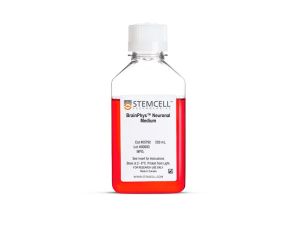
提升神经元功能的无血清基础培养基
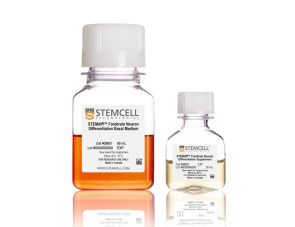
用于将人 ES 和 iPS 细胞衍生的神经前体细胞分化为神经元前体细胞的分化试剂盒
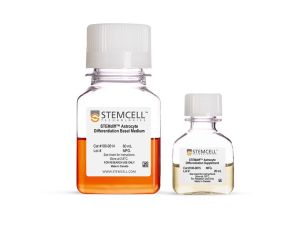
无血清分化试剂盒,用于从人多能干细胞(hPSC)来源的神经前体细胞生成星形胶质细胞前体。
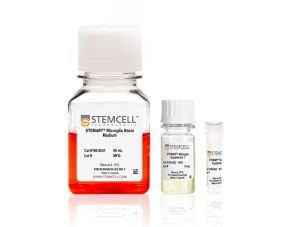
用于从人ES和iPS细胞衍生的造血祖细胞生成小胶质细胞前体的分化试剂盒
扫描二维码或搜索微信号STEMCELLTech,即可关注我们的微信平台,第一时间接收丰富的技术资源和最新的活动信息。
如您有任何问题,欢迎发消息给STEMCELLTech微信公众平台,或与我们通过电话/邮件联系:400 885 9050 INFO.CN@STEMCELL.COM。
在线联系

